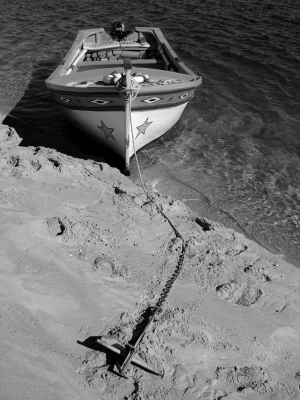 Earlier I talked about the concept of content saturation, which spelled out the sheer volume of content added every month and how it’s affecting your writing. Do you have any ideas as to how you can navigate through this sea of content?
Earlier I talked about the concept of content saturation, which spelled out the sheer volume of content added every month and how it’s affecting your writing. Do you have any ideas as to how you can navigate through this sea of content?
First, the cold hard truth is that no amount of yelling, screaming or crying is going to get your content read. Think about the amount of content added every day as an actual “ocean” of words and your potential visitors are akin to “fish” that you want to catch. If you’re on a boat, screaming your head off, are you going to catch a fish? If you tell your potential visitors that “This is the best article I’ve read in a long time. By the way, I wrote it!” will they come to your site? Probably not.
Instead, ask yourself why you are writing your content to figure out what kinds of fish you want to catch. Is it “just” because you need to write something down? Are you writing for SEO value? Customers? What?
Before you can catch the right kinds of visitors, you need to figure out what you’re going to write and why you’re going to write it. In other words, you’re determining which “net” of specific topics you’re going to publish to attract the visitors you want. Think about it this way: just because you have a great article about widgets, doesn’t mean you need to get as many eyeballs as possible on the page. What you need is to ensure that the people who care about widgets read your article.
Once you determine why you are writing your content, the next step is to figure out what action you want your readers to take. Do you want your readers to comment? Subscribe to your RSS feed? Or do you want your reader to contact you to find out more about these widgets you’re writing about?
Depending upon what action you want your visitors to take, you can develop a content strategy that will attract “qualified” visitors to your website or blog.
Build a Strategy Based on a Stream of Qualified Visitors
So now that you know why you want someone to read your content, you can build a strategy to help attract or “bait” those readers. Before you start second-guessing what your visitors might want to read, think about building a customer profile aimed at their behavior.
Customer profiles can be pretty challenging to create for new websites, but they are a bit easier to develop if you have an existing base of content. This is where your web analytics package comes into play. Start taking a peek at your visitor behavior through the lens of “visitor acquisition.” In other words, how do visitors find your site? What types of content are they reading?
After you’ve developed some basic impressions, you can figure out what types of visitors you’re looking for and begin catering content to them. This is a win-win for both you and your readers, because your reader is getting something of value and you are getting what you desire. On the flip side, if you discover that the readers coming to your site are not interested in your desired actions, you may want to re-think your content strategy and test new ideas. As part of your content strategy, I also highly recommend that you test your new strategies on a 30-60-90 day basis, especially if you are unsure of what kinds of content you want to create.
If you don’t have an existing website or blog yet, my best advice to you is to determine why you want to develop an online presence in the first place. If it’s to help manage your online reputation, then perhaps you don’t need to create a ton of content to achieve your goal. Perhaps all you need to achieve your goals is to set up your “boat” and cast a line.
Whether you start catering to visitors by creating more of a particular type of content or look for ways through social media to “spread the word,” you can make intelligent, strategy-based decisions to attract qualified visitors.
In summary, to make your voice heard in a sea of content I recommend asking yourself these simple questions:
- Why are you creating content?
- What action do you want your readers to take?
- How are you determining what to write?
- Who are you writing your content for?
- When is the best time to publish/promote your content?
- Where are you publishing/promoting your content?
Happy fishing!

 Buy Me a Coffee
Buy Me a Coffee